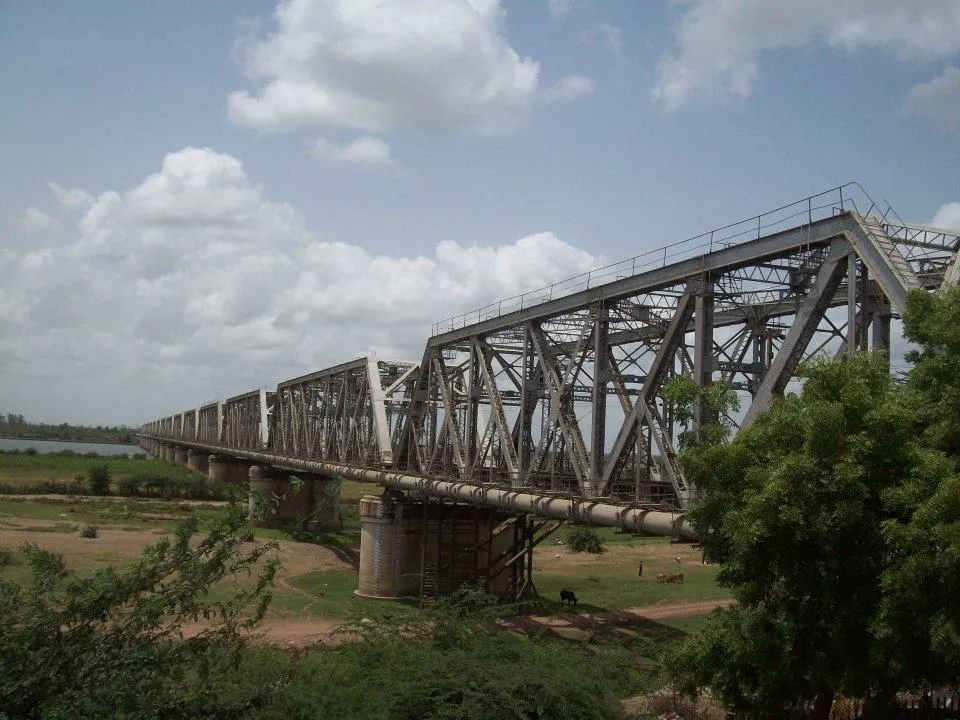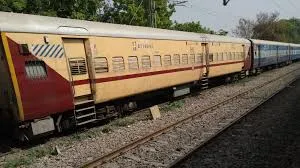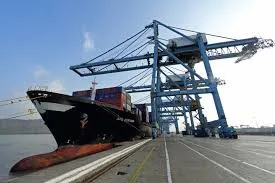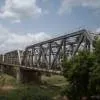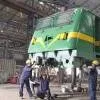For this special issue following the Roads Conference, CW asked many state road construction departments about projects awarded in the past two years. Only five responded: Bihar, Himachal Pradesh, Kerala, Punjab and Rajasthan. We noted great variation in the sort of projects awarded. While some states (Punjab) seemed to focus on longer stretches, others like Bihar focused on shorter stretches within cities, which were, interestingly, much higher value projects. In FY22, some states faced project delays – a continuing impact of the pandemic. But some actually saw a few projects getting completed before time. We asked states about their outstanding projects. Some states spoke of technology inclusion in road projects while others laid stress upon the construction of eco-friendly projects giving due consideration to flora and fauna. Read on for more....
BIHAR
From the office of Sanjay Kumar, Chief General Manager, Bihar State Road Development Corporation
Bihar awarded six projects over FY21 and FY22, three in each year. The projects awarded in FY21 had a cumulative length of 16.132 km and were worth Rs 1,447.86 crore while those awarded in FY22 had a length of 1.266 km and were worth Rs 44.63 crore. No project got completed before time during FY22.
Ten projects with a length of 425.651 km worth Rs 2,956.377 crore were delayed during FY22. The highest value of those was the four-laning of Gaya-Hisua-Rajgir-Nalanda-Biharsharif from km 0+000 to 92+935 of NH-82. The longest was the 120.9 km Baruna Bridge-Rasiyari Road (SH-88) worth Rs 683.26 crore.
The biggest project completed during FY22 was the Atal Path (Phase-1) (R Block Digha Path), a 6.3-km stretch worth Rs 43 crore. The most salient feature of this project was the technology deployed: gantry-mounted, variable message signboards (5m × 2m each) with an SMS application, an automated parking system and an integrated intelligent transport system to help users with real-time traffic information (from the Cloud), smart cameras, noise barriers and an anti-glare screen.
Bihar’s biggest under-construction project to have achieved financial closure is Patli Path (the AIIMS Digha elevated corridor), a 12.27-km project worth Rs 1,289.25 crore.
HIMACHAL PRADESH
Interview with Pawan Kumar Sharma, Director (Projects)-cum-Chief Engineer, Himachal Pradesh State Roads Transformation Program, Himachal Pradesh Road and Infrastructure Development Corporation
What are the biggest challenges to road construction you have faced in Himachal Pradesh (HP)? What steps have been taken to overcome these issues?
Himachal Pradesh has a largely mountainous topography and significant forest cover. The difficult terrain, seasonally poor weather conditions, scarcity of construction materials and dispersion of the population significantly increase (50-100 percent) the unit cost of road development and maintenance as against works in states with a mainly flat topography. The combined effect of the monsoon season from July to September and the snow in winter limit the construction season to about six months of the year.
Other main issues faced in the road sector in HP werea lack of past investment; a poorly funded and implemented maintenance regime; monolithic and traditional management by the Public Works Department (PWD) with a large inhouse force (staff of 44,000 labourers); outdated business practices; the absence of a coherent financial strategy; and the limited application of modem planning, design and construction methods.
To address these issues, the HP government decided to make the Himachal Pradesh Road and Infrastructure Development Corporation (HPRIDC) the implementing agency for road projects. HPRIDC also takes on a PMC role and provides consultancy services to state departments/corporations for various projects. It is also involved in the preparation of DPRs, supervision of land acquisition, forest clearances, utility shifting, the implementation of civil works, etc.
What projects have you awarded in FY21 and FY22?
HP signed a loan agreement with the World Bank in September 2020 for the implementation of the HP State Road Transformation Project (HPSRTP) worth $ 112 million/Rs 799.68 crore. Of this amount, the loan component totalled $ 82 million/Rs 585.48 crore while the share of the state was $ 30 million/Rs 214.2 crore. This project envisaged the reorganisation/restructuring of HPRIDC and the implementation of best international practices in the transport department and the police department to enhance road safety. In all, 650 km of the state road network (SRN) would be upgraded and 1,350 km maintained under robust maintenance interventions. Under Tranche I, civil works worth Rs 473.97 have started in six packages (as of September 2022). Three packages signed off in FY21 saw their commencement date being revised to FY22. Those projects have seen physical progress varying from 49.49 per cent to 55.914 per cent and financial progress varying from 46.73 per cent to 53.68 per cent. One project signed off and started in FY22 has seen 11.68 per cent physical progress and only 1.88 per cent financial progress. Two projects have just gotten underway.
You spoke of HP’s difficult terrain increasing the unit cost of road development and maintenance. Have you taken any special measures to help ensure that hazards associated with a mountainous topography such as landslides and flash floods don’t pose a threat to road connectivity?
During the implementation of the World Bank-funded HP State Road Project (HPSRP-I) worth $ 365 million/Rs 2,108.66 crore between 2007 and 2017, we successfully piloted and mainstreamed bioengineering as a cost-effective and environment-friendly slope stabilisation measure. Bioengineering delivered multiple benefits: employment to women, helping build resilience through the community, reducing landslides in the area, and creating a pleasing, green landscape through a nature-based solution.HPSRP-I involved providing training and capacity building in bioengineering techniques to HP PWD staff and labourers in various divisions. The project also rehabilitated about 80 debris disposal sites using various bioengineering techniques. Bioengineering is now being successfully applied to other HP PWD road projects. Work is ongoing to analyse and document each bioengineering technique and quantify its cost-effectiveness. Specifications for bioengineering in slope stabilisation and protection were prepared and published in 2015, with copies distributed to all PWD’s field divisions.
A case study of Village Nog in Bilaspur district, titled Building a Road to Prosperity: How communities in India are helping embed climate and disaster resilience into transport design, was published in the World Bank blog on July 18, 2022. Bioengineering offers a more cost-effective and employment-intense alternative.
Considering the World Bank’s appreciation of the work being done by HPRIDC on bioengineering techniques, we expect this technique to be replicated in other hilly states across all Bank-funded projects.
Have you awarded any other interesting projects?/,br>
Under the Shimla Smart City Mission, we have been entrusted the construction of a two-lane road tunnel,about 150 m long,parallel to the existing Dhalli tunnel.
In cities, flyovers and elevated walkways enable the smooth, free movement of vehicles and people. In hilly regions, tunnels perform the same function, as can be seen in Europe and Scandinavia. Shimla is no exception to this. The existing Dhalli Tunnel was constructed in 1852. Being 169 years old, it has outlived its design life. In fact, the existing tunnel has become a bottleneck as it connects the upper Shimla area, Mandi, Kulluand Kinnaur districts, resulting in traffic congestion. The tunnel has been repaired several times but as it has clearly outlived its life, the government planned a new one nearby to ensure the smooth plying of vehicles. The project value was Rs 53.86 crore. A contract was signed in September 2021 for a period of 12 months, including six months DLP. The contractor started work in November 2021. However, unpredictable snowfall, delays in removing encumbrances such as a Forest Corporation of India godown, trees, electricity substations and JE offices, and additional works at the east portal approach road, caused the project to get delayed for a few months. The targeted date of completion is February 2023.
The tunnel will be constructed using NATM technology. The construction plan will address social, environmental, diversion, land transfer, ecological, energy conservation and health and safety concerns. Rock slopes on both faces will be reinforced prior to the start of tunnel construction for portal safety. Condition surveys of existing buildings along the tunnel route will help evaluate their structural health before starting construction, during construction and post construction for the safety of occupants. Real-time instrumentation and monitoring will be implemented at the project site. The tunnel will have a pedestrian walkway on either side of the carriageway. The tunnel will have underground provisions for the crossing of future utilities.
KERALA
From the office of Abdul Salam, Deputy General Manager, Roads and Bridges Development Corporation of Kerala
The construction of 10 road over-bridges (ROBs) spanning 4.8km was awarded in FY21. These projects, valued at Rs 281.6 crore, were awarded on the design-build-transfer mode. They involved the construction of a steel concrete continuous composite superstructure.
Awards during FY22 constituted the construction of the Perambra Bypass, a 2.78-km stretch costing Rs 19.69 crore, and the Ferok ROB, a 0.61-km stretch costing Rs 3.59 crore.
Due to the outbreak of the COVID-19 pandemic, the construction of the 10 road over-bridges (ROBs) awarded in FY21 got delayed.
PUNJAB
From the office of Arun Kumar, Chief Engineer (NH), Punjab PWD (B&R)
Punjab’s PWD (B&R) departmentawarded 20 national highway projects between April 2020 and August 2022. Those projects spanned 186.87 km and were valued at Rs 637.61 crore.
National Highway (original works) projects with a length of 99.18 km were completed before time during FY22. Those projects were worth Rs 364.27 crore. Only one project covering 39.125 km and worth Rs 1,069 crore was delayed in FY22.
An EPC project, the widening/upgradation of the Abohar-SitoGunno-DabwaliRoad (NH-354E), a 50.89-km stretch costing Rs 322.48 crore, was the longest and the highest value project completed during FY22. This project provided for the construction of an underpass for cattleand fencing of the land abutting the SitoGunnoWildlife Sanctuary.
The widening/upgradation of the Moga-Kot Ise Khan-Makhu-Harike-Khalra Road (NH-703B), a 75.17-km stretch including tworoad over-bridges (ROBs) and costing Rs 263.64 crore, will be the longest and highest value projectto be completed during FY23. This is an EPC project.
From the office of Bhagwinder Singh Tuli, Chief Engineer (PMGSY), Punjab PWD (B&R) (now retired)
Over FY21 and FY22, the PMGSY projects awarded in Punjab spanned 2,084 km and cost Rs 1,541.19 crore. Roads spanning 26 km and costing Rs 19.42 crore were completed before time during FY22. The biggest of these projects was 10 km long, and cost Rs 7.41 crore.

